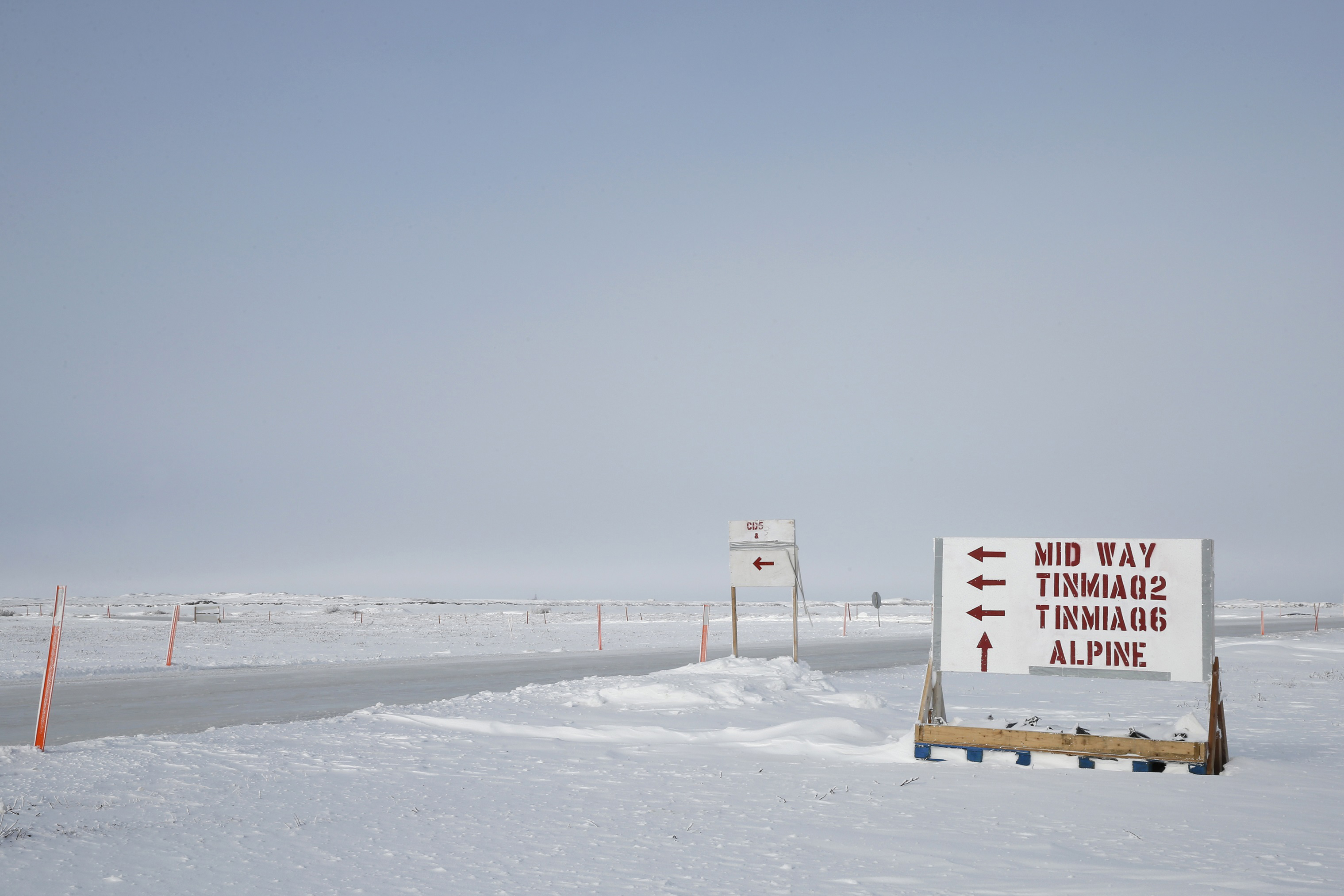Trump administration approves plans for a huge new North Slope oil project
The Bureau of Land Management's final environmental impact statement endorses ConocoPhillips' plan for its Willow project in the National Petroleum Reserve-Alaska.

The Trump administration has endorsed a development plan for what would be the westernmost producing oil and gas field on Alaska’s North Slope.
The Bureau of Land Management on Thursday released a final environmental impact statement that endorses ConocoPhillips Alaska’s plan for its Willow development. The Willow project would tap into oil in the previously overlooked Nanushuk formation that underlies part of the National Petroleum Reserve in Alaska. According to the BLM, Willow could produce up to 160,000 barrels a day and ultimately, up to 590 million barrels over its life, making it a major North Slope oil producer.
The preferred alternative selected in the final EIS — the same alternative proposed by ConocoPhillips — would allow up to five drill sites, 37 miles of gravel roads, seven bridges, an airstrip and a stand-alone processing facility capable of handling 200,000 barrels per day.
There will be significant economic benefits from Willow’s development, BLM Alaska State Director Chad Padgett said in a statement.
“This project would provide more access to valuable resources in the National Petroleum Reserve in Alaska,” Padgett said. “It provides for more throughput in the trans-Alaska pipeline system, ultimately providing for more jobs for Alaskans and creating more revenue for the State.”
The final EIS is to be published Friday in the Federal Register. A record of decision on BLM approval of the Willow master plan is to follow after an interval of at least 30 days, according to federal law. Further and more specific permits are needed to allow project development.
For ConocoPhillips, the release of the final EIS is good news “and we look forward to the Record of Decision so we can proceed with the project planning,” company spokeswoman Natalie Lowman said by email. “ We believe the BLM and cooperating agencies have done a robust, thorough, and extensive review of the project, and ConocoPhillips appreciates all the hard work it took to get to this point. We are still proceeding on our plans for development of the Willow project.”
A decision on moving into front-end engineering and design is expected later this year, she said.
Critics — environmentalists and some residents of Nuiqsut, the village closest to the Willow site, as well as other North Slope communities — have panned the BLM’s timing of the environmental review. The online public meetings the agency used during the coronavirus pandemic were an inadequate substitute for in-person meetings, they argue. They had urged that the process slow down to give the public more time, without the distractions of the pandemic, to understand and comment on what will be a major development with potentially serious impacts.
“It is unconscionable that the Bureau of Land Management is moving forward with a massive oil and gas development during a global health emergency,” Nicole Whittington-Evans, Alaska program director of Defenders of Wildlife, said in a statement. “This huge project, together with other industrial development in critical polar bear habitat across the Arctic, poses a significant threat to imperiled Southern Beaufort Sea polar bears and their critical habitat, in addition to other wildlife. It also represents a major expansion of fossil fuel infrastructure in the Arctic, despite the urgent need to ramp down our carbon emissions.”
The recommended plan differs from ConocoPhillips’ original plan in the way it envisions the delivery of modules and other construction necessities. The company’s original plan featured an artificial island that would be used as a staging site and be connected to Willow by ice roads. After local residents raised concerns about impacts to subsistence food-gathering activities, ConocoPhillips switched to a plan involving an existing barge landing site to the east and a series of connecting ice roads from there, including a temporary ice bridge over the Colville River.
That change in plans was considered significant enough to warrant a supplemental environmental study, which was launched in January.